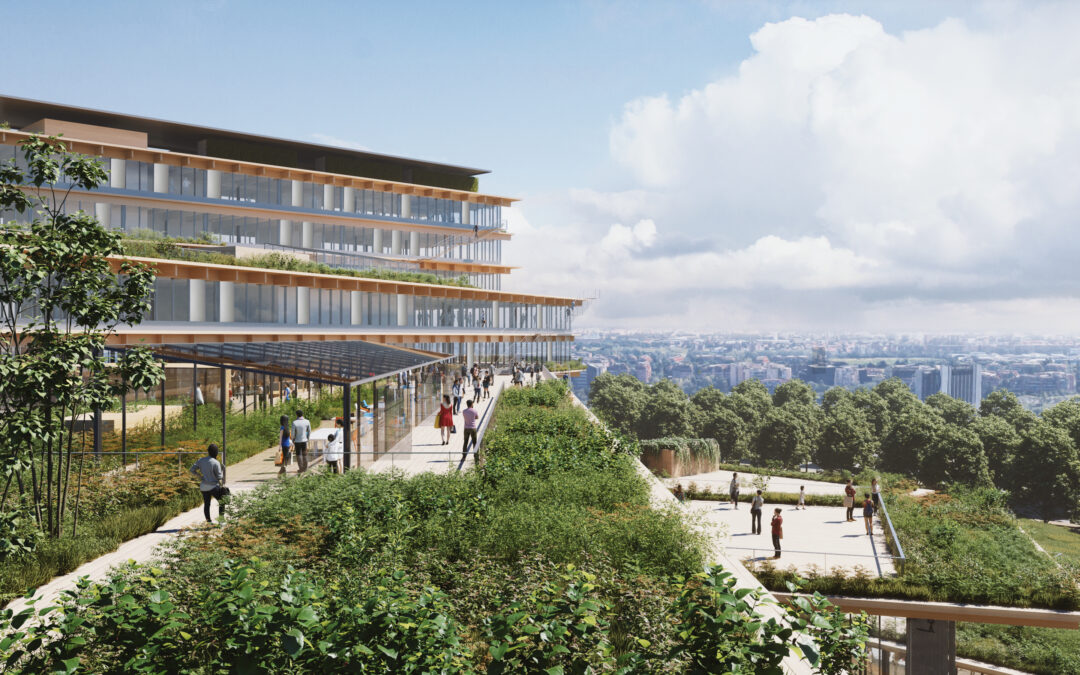-
Cubicle life is dead – Long live Biophilic design
As you may have heard, the traditional cubicle life is over. For real. In fact, it’s been over for a while clearly the pandemic has accentuated this.
For a start, people have woken up and realized that there is more to life than spending days, months and years locked in a dull office and all are looking for something different .(and we’re not just talking about millennials) and the the world woke up to the biophilic design principles.
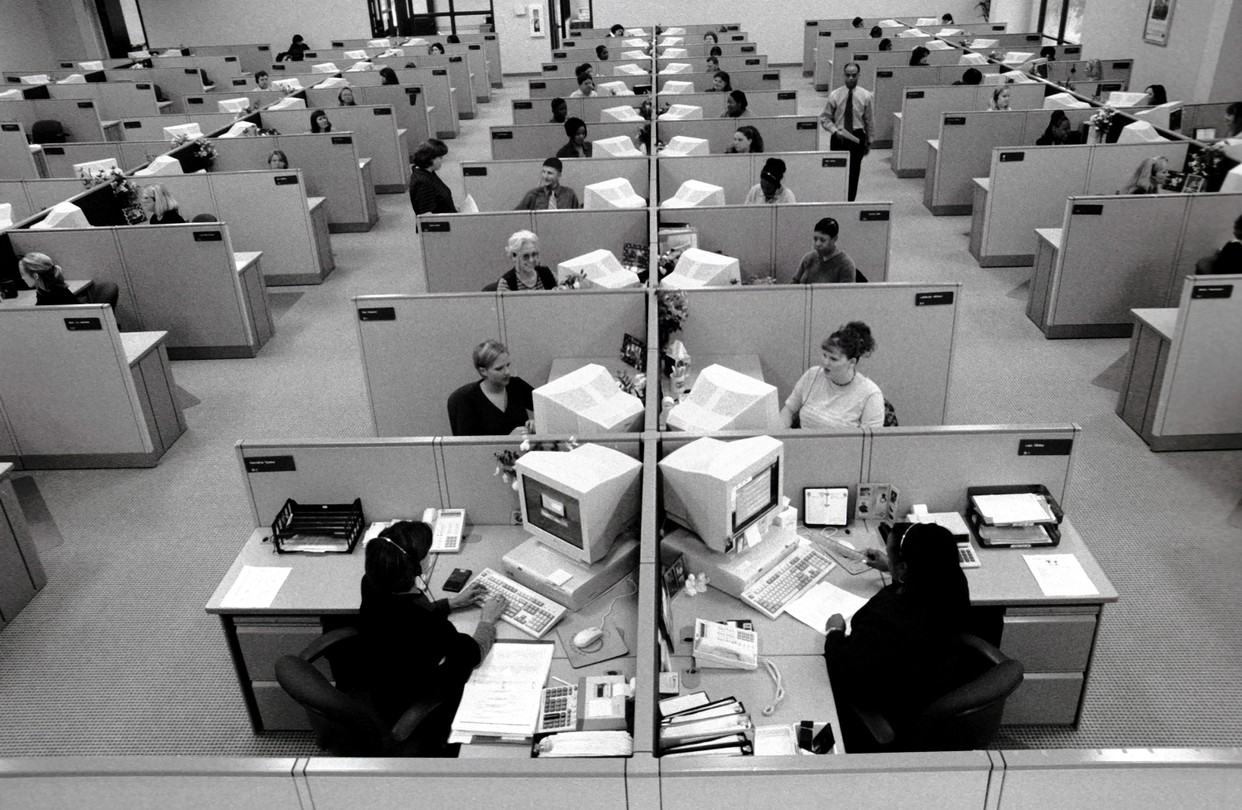
GETTY IMAGES
-
Tap into your core values
I would go further and say that employees no longer feel committed to a company and certainly not just on a pay check basis; they are looking for an alignment with purpose. Of course, many organizations do care for their employee’s well-being and have set in place a series of benefits such as cafeterias, and kindergartens, and in some cases, I even saw hairdressers and gyms; but these are not sufficient because they do not touch the core values that are important today and even more so in the future; they are just another expression of an economic transaction.
People have come to realize that they want to live a fulfilled life; that is a life with a sense of purpose, and it is necessary that this is met on all levels both at home with family and friends but also in our workplace. The relationship between employee and employer is no longer based on just a financial transaction.
Even if employees are given to opportunity to partially work remotely, when they come to the office, they want to feel part of something bigger, part of a community that has the same values as theirs; that is able to drive change and make an impact. The impact does not have to be enormous, but, it does have to have significant. Organizations need to look deep into their core values of why they exist, and what are they bringing to the world and the community.
Following our experience of remote working during the pandemic there has been an awakening, actually I would say more of a loud screaming for this need of purpose.
-
DATA says:
According to some surveys, workers are clear they don’t want to return to the way things were, with only 5% saying they want to return to the office full-time. Over half (55%) of respondents would draw the line if they lost the ability to work from home – they would begin looking for a new job.
The fast pace of today’s digital world and constant change of focus is causing increased cause of stress and even burnout (a new pandemic maybe!) according to American Psychological Association, this can reduce a person’s productivity by as much as 40%.
Consequently, this will cause the organization increased costs in terms of healthcare and insurance but mostly this will cause disengagement and even a misalignment between employee and the organization. A MillerKnoll survey concluded that well-being is also one of the biggest factors employees consider when deciding whether to come into the office and whether to remain in the organization or not.
But what I find most interesting, and this is where I see the necessity for organizations to tap into defining or resurrecting their core values According to a recent Gallup poll, 65% of millennials and 58% of older generations consider greater work-life balance and better personal well-being to be very important when considering whether to take a new job. Since people are about 80% of the cost of running a business, providing a working environment where employees feel their well-being is taken into consideration is simply good for business.
Introducing some biophilic design elements can in fact improve these figures.Start your 2023 Biophilic design year with your entrance
Did you know that the lack of natural elements in the workplace can contribute to absenteeism as much as 10% (Elzeyadi, 2011). On the other hand, having a direct view of nature and even integrating natural elements increases a sense of well-being by as much as 20% with consequent improvements in collaboration and productivity.
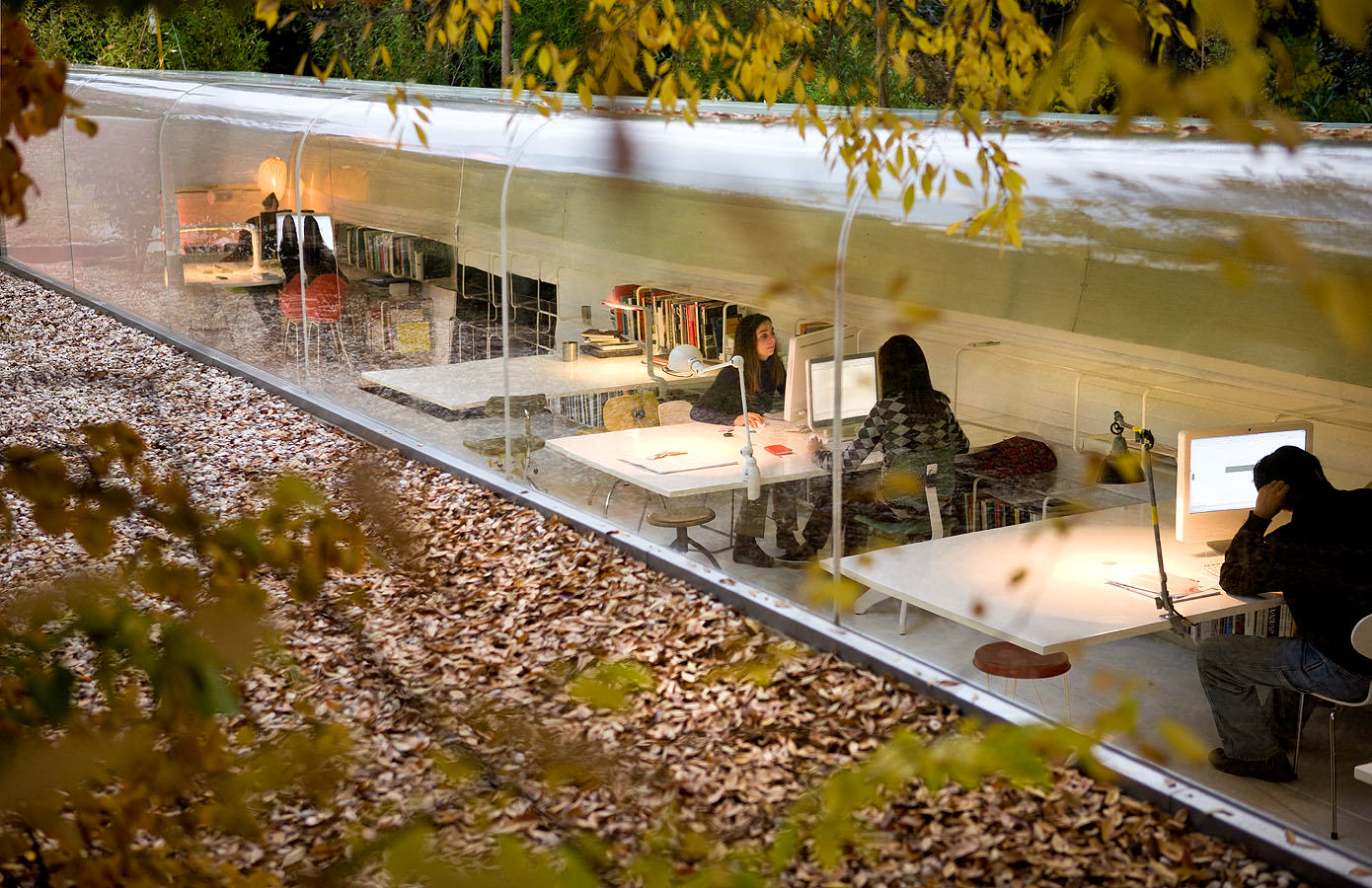
credit: selgascano office. Photo: Iwan Baan.
Aristizabal’s study found that when exposed to simultaneous and multiple biophilic design principles the beneficial effects are exponential to our well-being. There is now a lot of scientific data freely available that supports the introduction of biophilic design in the workplace.
So incorporating some biophilic elements into your office could enhance the alignment with the organization’s purpose and concurrently look after the well-being of the occupants as well as increase productivity.
-
7 strategies for biophilic design in the office
Finally here are a few suggestions that we can immediately implement in our workplace, be it the office or even in our home office.
- Firstly it would be great if we could move desks so that we all can have at least a sneak peek at the outside. Even if we do not look over onto a park or an open field or water (that would be ideal), just being able to look up into the sky and notice how it changes with the weather, connects us to the natural world.
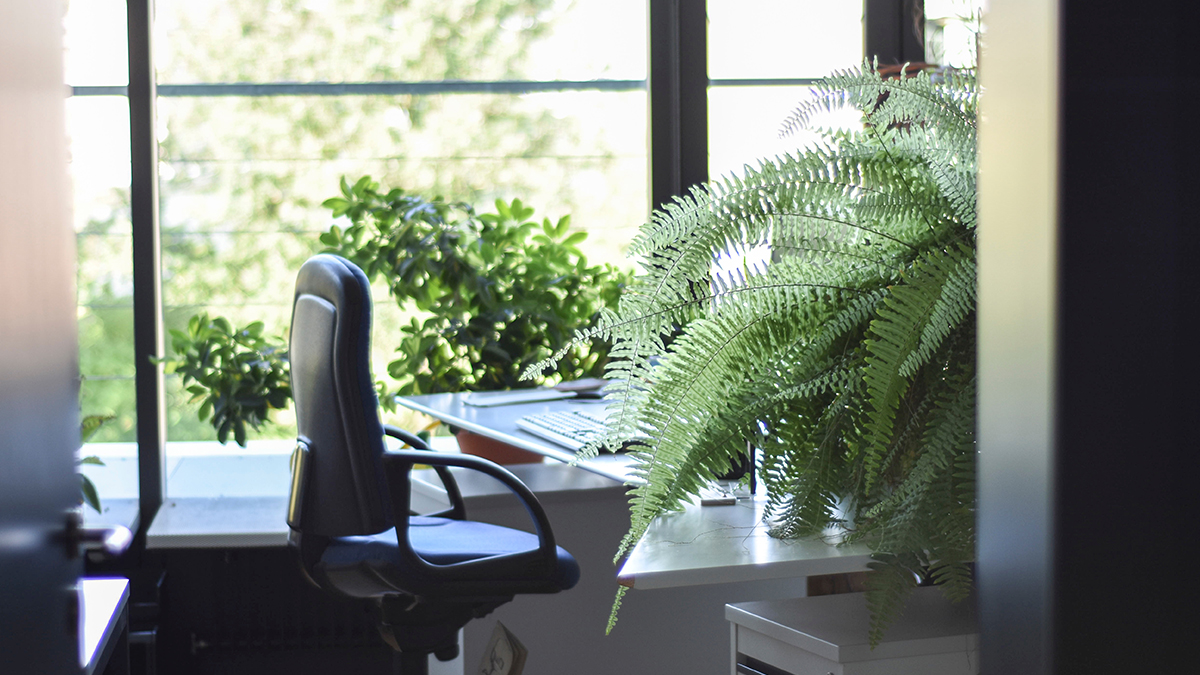
credit: harvard business review
- It may not seem very biophilic upon first impression but decluttering and tidying up does make sense – even from a biophilic point of view. Decluttering allows us to see things and stay focused – so get rid of excessive information and paper; don’t forget the incredible power of technology.
- I remember that solid oak desk my grandfather had, I would sit behind it in the important chair and just stroke the desk; my haptic, visual, and olfactive senses were all satisfied. The more we manage to introduce natural materials the better. Of course, I am not implying that we can all have solid oak desks in the offices … however, not far off; the use of natural materials as much as possible is an indirect connection with nature.
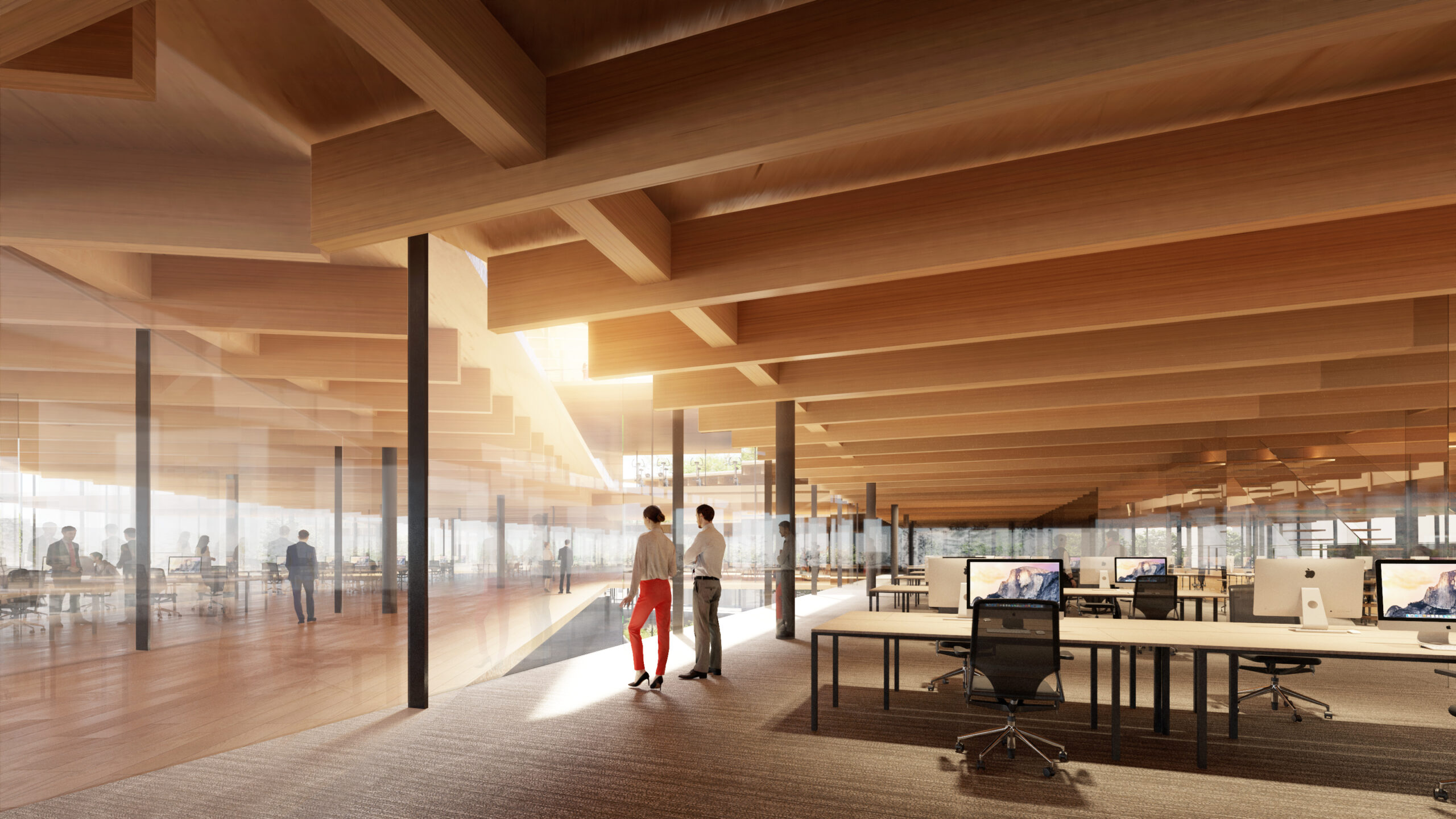
credit: Kenga Kuma associates _ Welcome Milano
- Let us also take time to rethink the layout; who hasn’t dreamt of google – working on beanbags, unlimited snacks, a billiard table, and so on? But no I am not implying that it all has to be like this, again… however, allowing for quiet spaces where people can sit and think in silence, or communal spaces where people can socialize, or open spaces with Circular tables where people can brainstorm or problem solve together is a good idea.
- We love natural light, but .. however, we could modify lighting systems by changing to artificial lighting that actually complements the circadian rhythm. You could even go one step further and allow for desk lamps to be dimmable according to the individual’s needs.

credit spacetor
- Allow for adequate airflow – if you cannot open and regularly refresh the air make sure you do have a good quality air control system in place and furniture arrangement to allow natural flow.
- Last, but not least important, yes plants…we can use green walls, plants as partitioning, allow personal plants on desks, and if you have an open balcony, why not try a balcony vegetable patch and get employees involved in looking after it (voluntarily of course)
-
Conclusion
These are just some ideas you can apply without having to go through a complete refurbishing. If you are interested in reviewing completely your office space don’t hesitate to contact us at thebiophilichub@gmail.com together with our experts we will support you on this project.
Nevertheless, beyond biophilic design, organizations still need to look deep into their core values of why they exist, and what are they bringing to the world and the community if they are truly interested in the well-being of their employees, their productivity, and maintaining talent.
Employees will be interested in organizations with which they feel aligned and this must be represented clearly in the workplace.
for more on starting your Biophilic year take a look here: Start your 2023 Biophilic design year with your entrance
